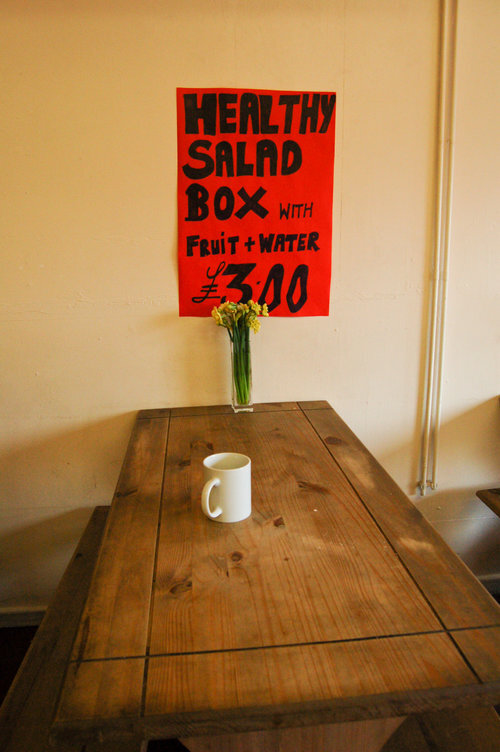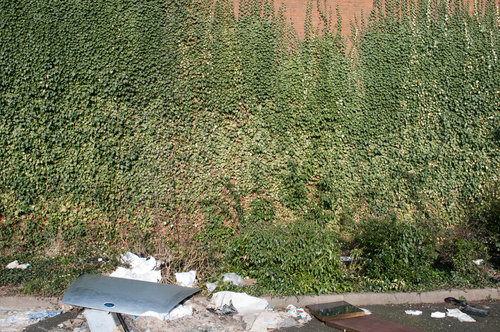Nicholas Priest: Stadt Fabre
My documentary style is just to take what ever is already there, my projects have started to narrow down in to small bodies of work; a place or subject.
The psychogeography of Birmingham depicted via his latest book Stadt Fabre, City Colour. Artist, documentary photographer and lecturer Nicholas Priest talks to us about his practice and finding cohesion in his childhood home; the subject for this body of work.
Can you tell us more about you and your artistic practice?
I struggled at school with dyslexia and I got bored pretty easily but I loved anything with more freedom; Geography, History and Art but I couldn’t draw and couldn’t paint but I always had good ideas. After failing two A levels, I dropped into a workshop in the photography department at my local college. I admittedly dropped one of those failing A levels and picked up photography. I bought a Nikon F55 film camera and my ideas from my art lessons started to get the outcomes I wanted through photographs, I never looked back.
I came out of my photography degree at the start of the recession about 7 years ago and it was hard to find a photography job and commissions around my style of documentary. I worked in a London studio for a little while but would sit and just want to go outside exploring. I moved back home and started working freelance for different companies and setting myself up as a wedding photographer and always getting away to plan and shoot my own projects.
My documentary style is just to take what ever is already there, my projects have started to narrow down in to small bodies of work; a place or subject. Post editing is minimal, I use Lightroom to retouch a few images but never to change them. I love researching photographers and then researching an area and dropping myself in it and then walking around getting lost; I used to listen to music but found I drowned out what was going on around me – so I now just park up and walk for hours trying to find photographs within these different areas.
In the last 3 years I have been teaching photography at the college where it all started. Every day I get to talk about photography to the next generation about my experiences and my love for photography. In my own time I carry on with my projects and I am starting projects with new ideas, with inspiration from my students alongside my own education and practice. I am studying my masters next year and have loads of ideas for documentary and documentary portrait projects, which I can’t wait to get started.
What was the creative process behind this work?
This series has been going from my second year of photography when I found documentary photography. The only subject away from art I was good at school and I enjoyed was geography; which worked out worked perfectly with my documentary style. I research an area and walk for hours and hours with my camera and try to end up where I started. Research is key to a shoot and a series – you must have inspiration and you must have an idea for content. I would sit for hours in the library at university and pull book out after book out until I found photographers to inspire me on my ideas. This process was key to this series, which is just being sequenced in to a 3 part zines. And is key to all my other projects and future projects.
What work inspires or has inspired you?
I remember the day I got introduced to William Eggleston and I have never looked back. His use of colour in mundane and everyday places is a huge inspiration to me on all of my projects. He taught me that photography is quite simple and you do not have to look that far to find it. Eggleston let me in to Tom Wood, Stephen Shore, Martin Parr, Joel Meyerowitz, Danny Lyon and Hans Van Der Meer; photographers with content in a documentary style that make simple ideas and concepts come alive with photography and make those simple ideas become unique and timeless. Recently I have been following Alec Soth; who is taking documentary photography to the next level with his intimate portraits. I visited his series ‘Gathered Leaves’ at the London Science museum and I was blown away. I am also spending all my money on photobooks and Zines; Theres something magical about print and something you just don’t see on the internet; I sit and flick through every page and then sit back down and look at every photograph for as long as its takes to see what the photographer saw.
Are there any artistic movements you enjoy in particular and why?
Within art lessons I always loved the colour in pop art; from Warhol to Lichtenstein and I would try to get the biggest and brightest colour within my art work. When I first studied photography we looked at Modernism; angles and viewpoints, close ups and cropping. This was all new to me and something I teach now and look back at as the start to my documentary style, alongside the colour I used in my art work from my love of pop art.
Do you have any opinions or ideals underlying your art?
I have always loved Warhols quote ‘Art is what you can get away with’ – art is about expressing what you think and feel and that’s what I love about photography. I love going out with an idea and I love having no idea but looking out for an idea idea with or without my camera. I think people get lost in thinking too much about what people will think about their work and ideas rather than just doing what they want and doing what they can get away with.
Stadt Farbe is a great example of looking back and adding cohesion, it’s one of the great applications of photography; it’s ability to contextualise memory. It’s healing. Can you tell us more about your relationship with Birmingham? Where did this body of work come from?
I would visit Birmingham with my mum and sister shopping when I was younger as we lived a 45min train ride away in Stratford upon Avon. My mum studied art and textiles in Birmingham and my grandad (who was an artist) had commissions in and around Birmingham, he still has a piece up in the middle of five ways roundabout.
It’s a huge city and I would just wonder around looking up and down at the huge buildings and seeing the hustle and bustle of the shopping areas and the people. Later I would take the train with friends and go to different skate parks and street spots. The street spots were always just out of the centre and this is where I saw the ‘real’ Birmingham; away from the shops and banks there is the real Birmingham, they spots would be the essence of Stadt Farbe. When I went to study my degree in photography in Birmingham I started to get to know the city as a whole even more. I lived in Perry Barr and then Ladywood and I would get the bus in and out of the centre of Birmingham and across Birmingham to visit friends. Within my second year we had a documentary project; my initial research in to documentary led me back to these spots from my childhood and the train and bus rides this time taking my camera on theses bus journeys and started to wonder in to different suburbs getting lost and documenting these areas to show the real life Birmingham and its colour.
After the documentary project was handed in I just kept with it and kept with the journeys and getting lost, and ‘Stadt Farbe’ which is city colour in German was born. This project has been running for the last 9-10 years and has come to its end through 3 different cameras but with the same idea of the real life Birmingham and colour.
Any words for aspiring artists?
‘If you don’t ask you do not get’; keep on going with projects and your art work and if you want to send it to people and organisations then do. Do not be put off by anyone or anything. Social media is great and you can get your work out all over the world, alongside this printing and self-publishing is getting stronger again and photography is getting more and more popular in galleries. So use your social media to showcase and tell people about your work, projects, photobooks, zines etc…
Is there anything you’re currently working on?
I am currently sequencing the Stadt Farbe zine, so follow my social media to see it go up in a month or so. I have also been working on a project on England flags and I am also going to re visit my final year project on Saturday and Sunday league football. I am also thinking about loads of new documentary and documentary portraits projects to work alongside my masters next year so keep an eye for that. I am excited about this year and my work.
Where else can our readers find your work?
I have just been featured in the ‘Loose London’ zine so go and check that out for some great work from all walks of life.
More @ nicholaspriest.com & instagram.com/nicholasgpriest











